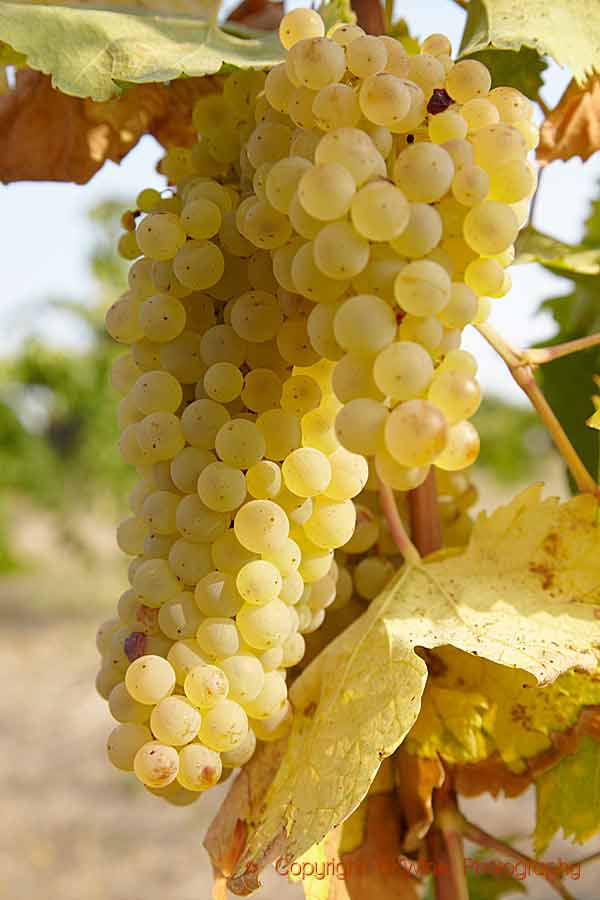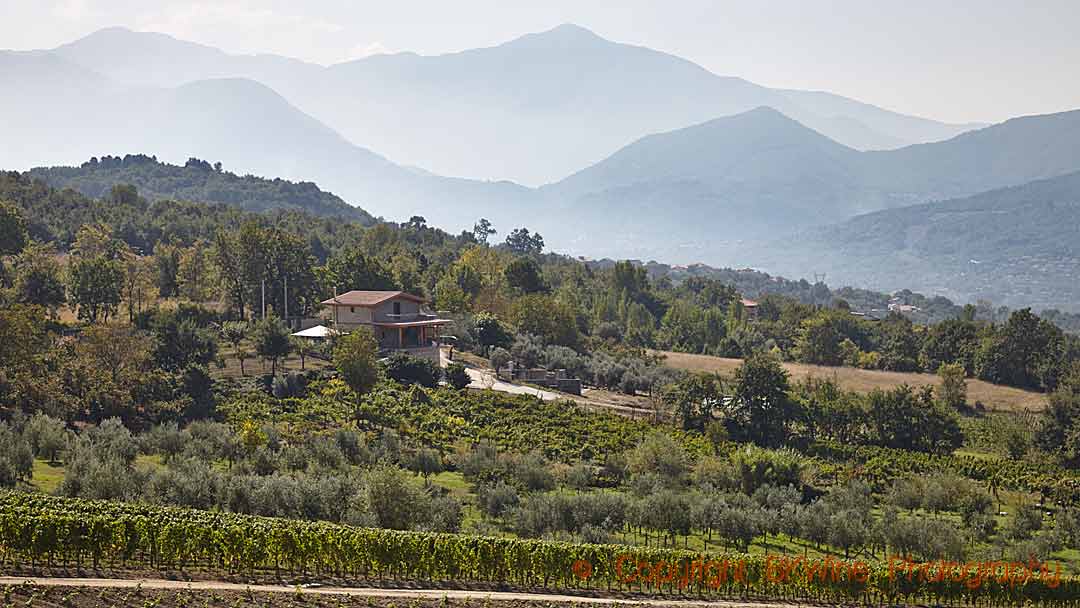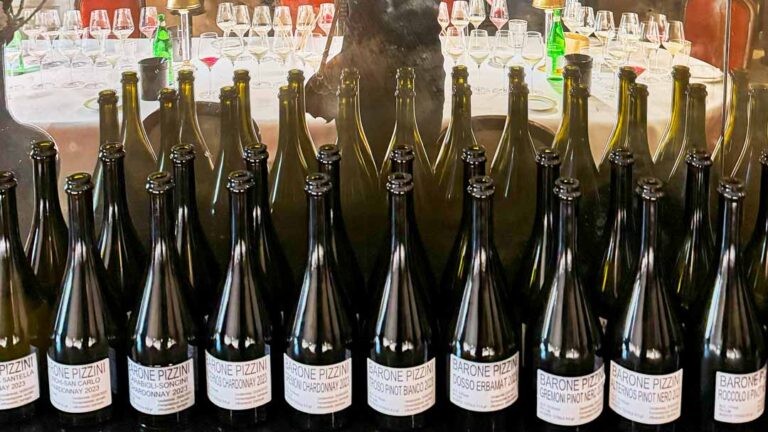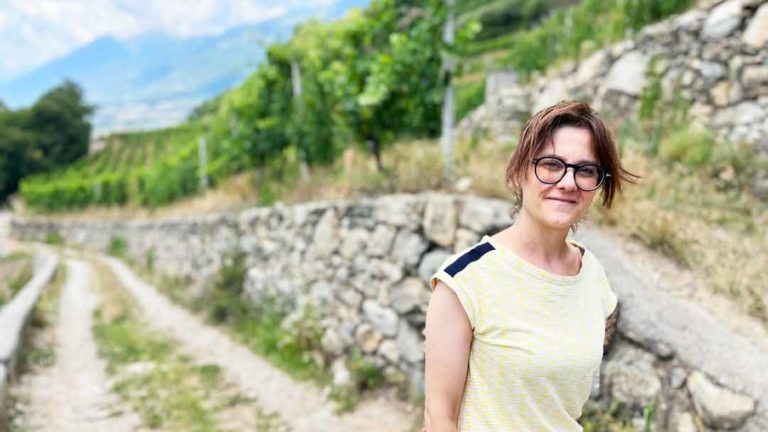Caprettone is a grape that until recently was often confused with coda di volpe, another native grape variety from Campania. A small group of wine producers are now making a big effort to bring caprettone into the spotlight. One of them is Casa Setaro on the black slopes of Vesuvius. A wine producer that you should keep on your radar.
Naples. It is not just a city; it is almost more of a state of mind. I remind myself of that before I step out of the central station and jump straight into the fantastic jumble of colours, sounds and scents that belong to Naples and that we northerners, no matter how much we would like, will never be able to understand fully.
We pass narrow alleys with clotheslines hanging between the windows and past stately palaces. Scooters zigzag between cars in heavy traffic. As if by a miracle, we arrive at Naples’ boardwalk along the sea where a stately Vesuvius watches over us from the other side of the bay while the blue Mediterranean sparkles in the sunshine.
“I was not entirely sure that we should present the wine right here; this is a trendy and chic restaurant and does not really reflect my personality,” says Massimo Setaro, pointing to the sign Terrazza Calabretta. It is one of Naples’ most popular fish restaurants, to where well-dressed city slickers make a pilgrimage to enjoy a long wine list and blend into a modern interior.
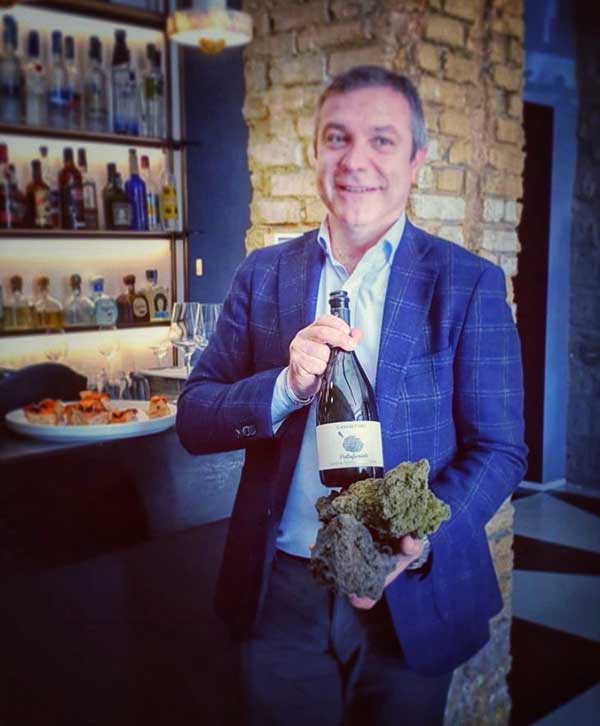
“I have my roots on the black slopes of Vesuvius,” continues Massimo, who began bottling under his own name in 2005. Before that, the family sold wine in bulk to cooperatives and larger producers. He proudly holds out the bottle with his new wine, the bottle that is the reason for our meeting.
It is a sparkling wine called Pietrafumante (the smoking stone), made with “the classic method” with a second fermentation in bottle and with 48 months of ageing on the yeast; it’s “brut nature”, in other words, entirely without dosage. So what’s so special, you wonder? What made me travel to Naples? Well, it’s the grape variety that the wine is made from, caprettone. It is a native grape variety from Campania, whose name means goat, probably because the cone-shaped grape bunches resemble a goatee. Until recently, the grape was confused with another white grape variety called coda di volpe (foxtail), so no-one really knows exactly how many hectares of caprettone there really are in Campania.
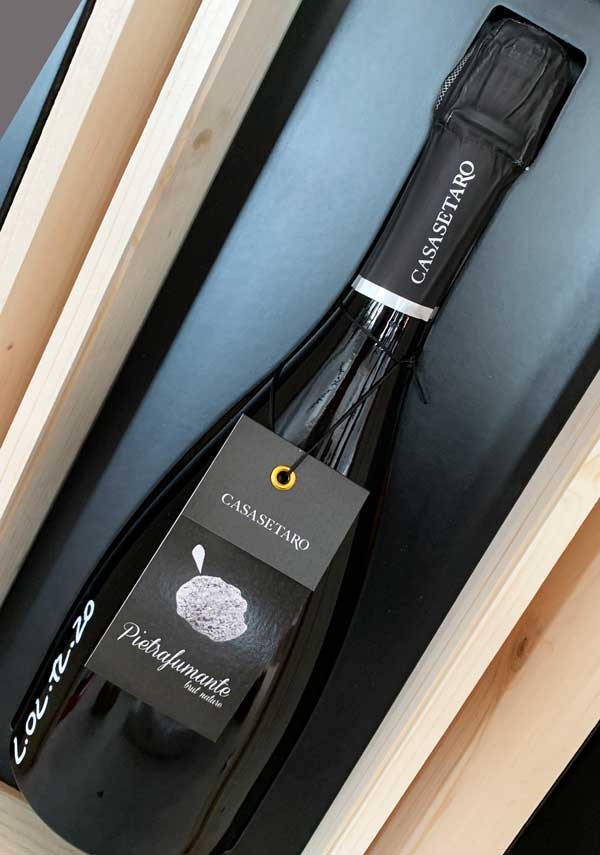
“Caprettone produces neutral wines that become complex and interesting over time. At first, it is mostly aromas of lemon and grapefruit, but over time, the wines develop aromas and flavours of honey, nuts, orange blossoms and genista, ”says Massimo.
He’s right. Pietrafumante has exactly those aromas, with fresh acidity, while the wine is creamy with a long finish. An excellent wine made in a small number of bottles.
Massimo Setaro experiments as much as he can in his small wine cellar on Vesuvius. In addition to the sparkling wine, he also makes a still wine on caprettone, Aryete. For Aryete, he ferments and macerates half of the must together with the grape skins in terracotta amphorae. The other half spends time in older oak barrels.
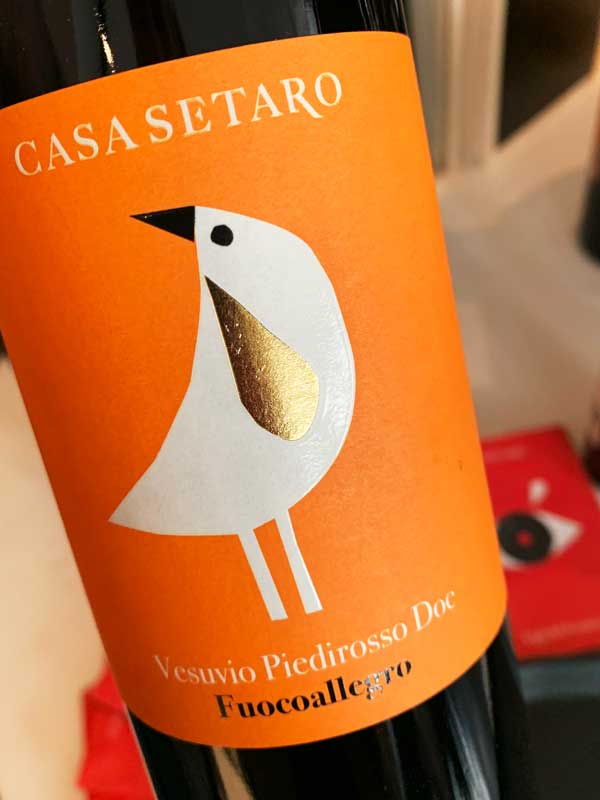
“Unlike other orange wines, caprettone does not release colour, so it looks like a wine that is fermented without skin contact,” says Massimo. Casa Setaro Ayrete is fresh, with a certain fatness and aroma of candied fruit, and then those notes of nuts, honey, genista, and saltiness shine through. It has an appellation called Vesuvio Caprettone DOC.
I also have to strike a blow for the winery’s red wines, such as Fuocoallegro (Vesuvio Piedirosso DOC), made from one of my favourite grapes, piedirosso. A balanced, juicy wine with silky tannins, with lots of red fruit and flowers. A wine that, despite being light, has depth and is reminiscent of a well-made gamay.
Both Casa Setaro Pietrafumante, Fuocoallegro and Ayrete are made from grapes from ungrafted vines on the slopes of Vesuvius.
Casa Setaro is a winery to watch in the future. Because, just like a lot that happens in Naples’ traffic, so also exciting things happen on Vesuvius’ black slopes. Much thanks to wineries like Casa Setaro.
Read more on their site: www.casasetaro.it
